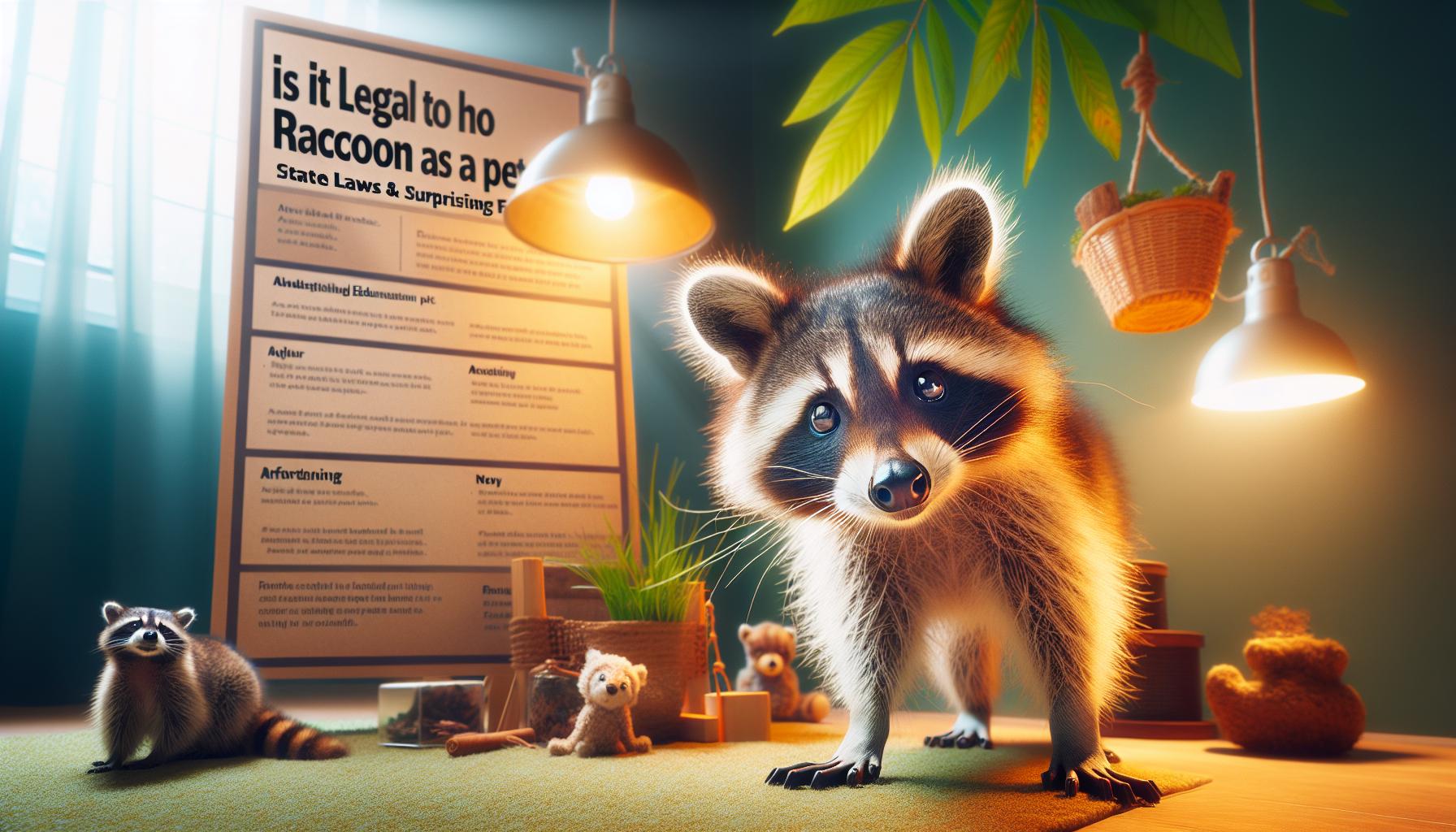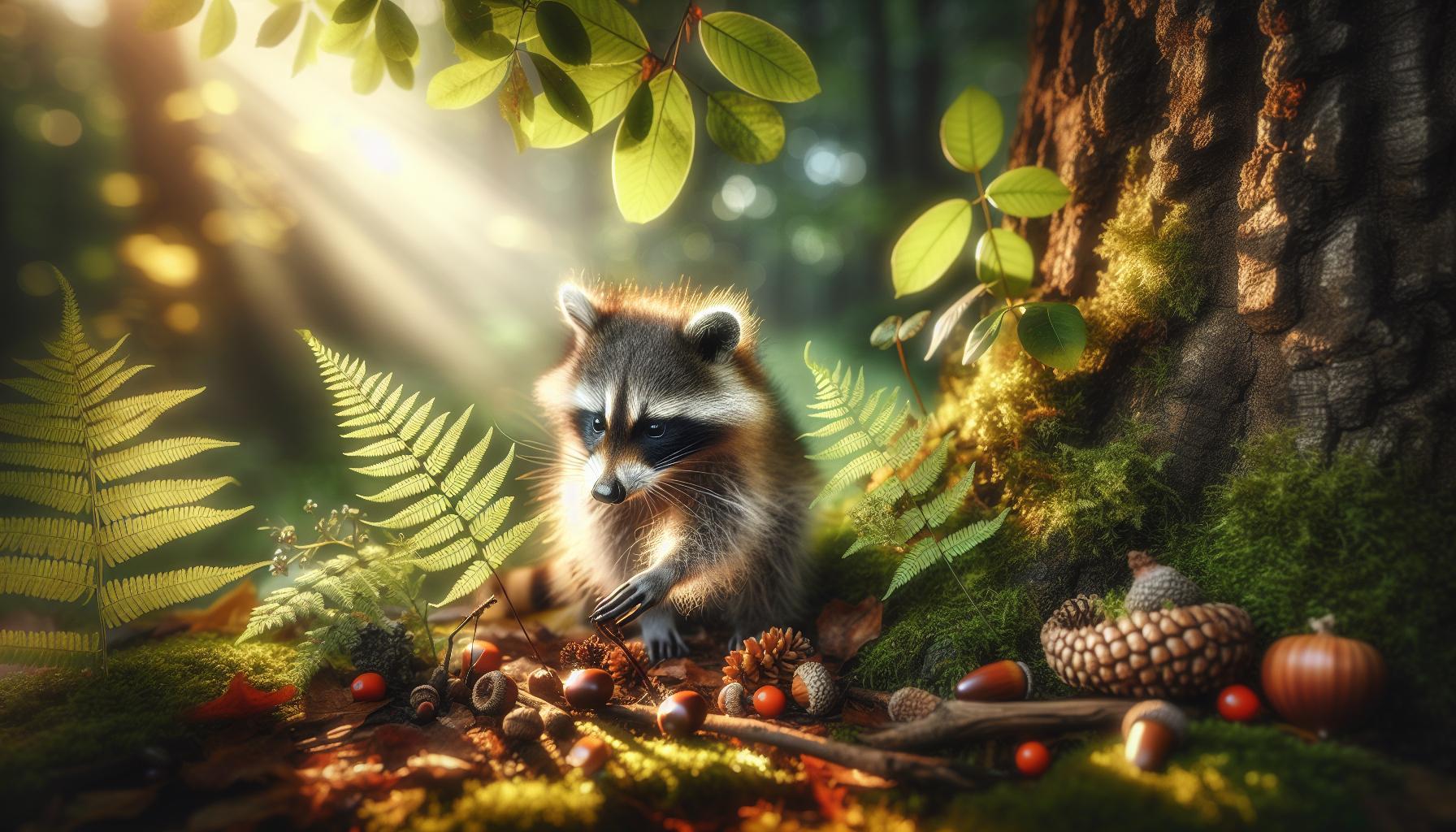Imagine a creature that embodies the majesty of both lions and tigers-the liger, a captivating hybrid born from a male lion and a female tiger. As the largest known cat in the world, ligers not only capture our imagination with their sheer size but also raise important questions about hybridization, conservation, and the ethical considerations surrounding animal breeding.
Exploring the intriguing facts about ligers illuminates not just their unique biology, but also their significance in understanding feline behavior and genetics. Whether you’re a wildlife enthusiast or simply curious about this extraordinary animal, learning about ligers can enhance our appreciation of the natural world while underscoring the importance of responsible ownership and conservation efforts. Join us as we delve into the fascinating realm of liger animal facts and unveil what makes these hybrids so extraordinary.
Contents
- 1 Liger: The Fascinating Hybrid Animal
- 2 Understanding the Genetics Behind Ligers
- 3 Physical Characteristics of Ligers Explained
- 4 Natural Habitat and Behavior of Ligers
- 5 Dietary Needs and Feeding Habits of Ligers
- 6 Ligers vs. Tigers: Key Comparisons
- 7 Ligers vs. Lions: Understanding the Differences
- 8 Conservation Status and Ethical Considerations
- 9 How to Care for a Liger in Captivity
- 10 Myths and Misconceptions About Ligers
- 11 The Unique Personality Traits of Ligers
- 12 The Future of Hybrid Animals in Conservation
- 13 Q&A
- 14 Wrapping Up
Liger: The Fascinating Hybrid Animal
The liger stands out as one of the most remarkable hybrids in the animal kingdom, resulting from the mating of a male lion and a female tiger. Known as the largest cat in the world, ligers can reach extraordinary sizes, often weighing between 400 to 600 pounds and measuring up to 11.5 feet from nose to tail. This impressive proportion is not just a product of genetic chance; scientific research indicates that this hybridization might arise from the interaction of growth factors found in these two majestic species. Unlike their parents, ligers exhibit a phenomenon known as hybrid vigor, contributing to their larger size and overall health compared to lions and tigers.
Ligers possess a unique combination of physical traits, borrowing characteristics from both lions and tigers. For example, while they may share the tawny coloration of lions, they often possess faint tiger stripes, particularly in their fur. This blending of features can create stunning appearances that capture the imagination. However, their impressive looks come at a cost; ligers frequently experience health challenges due to their size, including issues related to their bones and overall physiology, which can lead to a shorter lifespan than that of their parent species.
As fascinating as ligers are, they underscore important discussions regarding animal ethics and conservation. The intentional breeding of ligers in captivity often raises concerns about the welfare of the animals involved, and many zoologists advocate for a deeper understanding of hybrid animals in relation to natural ecosystems. Moreover, ligers cannot reproduce, meaning their existence is reliant on human intervention, which raises questions about the long-term implications of creating such hybrids in terms of animal conservation and genetic diversity within wild populations. As we marvel at these extraordinary creatures, it’s essential to consider the ethical ramifications and the role of breeding practices in shaping the futures of such hybrids.
Understanding the Genetics Behind Ligers
Hybridization in the animal kingdom often leads to some of the most extraordinary results, and the liger is a prime example of this phenomenon. The genetic makeup of ligers captures the essence of both their parent species, the lion (Panthera leo) and the tiger (Panthera tigris). Through the process of interbreeding, ligers showcase a remarkable genetic blend that influences their size, appearance, and even certain behavioral traits. This process, however, is complex and raises intriguing questions about genetics, inheritance, and the implications of creating such hybrids.
At the heart of the liger’s genetic uniqueness is a principle known as hybrid vigor. This advantage is typically observed in hybrids, leading to an increase in size and overall vitality compared to their pure-bred counterparts. Ligers often grow larger than both parent species, with some weighing between 400 to 600 pounds and stretching over 11 feet in length. This growth can be linked to the unique combination of growth-related genes inherited from both lions and tigers. Unlike pure lions and tigers, ligers do not experience the same limitations on growth, which contributes to their enormous size and often healthier appearance during their formative years.
However, the intricacies of liger genetics also come with certain drawbacks. The hybridization process does not come without its complications; ligers often face health issues due to their sheer size and genetic factors that can lead to skeletal and organ complications. Additionally, ligers are typically unable to reproduce. Female ligers can be fertile, but male ligers are usually sterile, underscoring the challenges and complexities of hybrid animals in general. This creates a reliance on human intervention for the continuation of the liger lineage, which raises ethical concerns regarding animal welfare and conservation efforts.
In terms of genetic traits, ligers can exhibit a fascinating blend of physical appearances. While they may inherit the tawny coat of a lion, they often display the characteristic faint striping found on tigers. This unique aesthetic combination not only mesmerizes the public but also serves as a significant reminder of the diverse genetic characteristics present within the Panthera family. helps illuminate their place in the natural world and emphasizes the delicate balance between species preservation and human influence on animal breeding.
Physical Characteristics of Ligers Explained
The liger is an awe-inspiring testament to the diversity and wonders of the animal kingdom. As the largest known feline, ligers can grow to astonishing sizes, often exceeding both their lineage species in dimensions. Males can measure between 10 and 12 feet in length and can weigh anywhere from 400 to 600 pounds, establishing them as the true giants of the cat family. Their expansive growth can be attributed to the hybrid vigor phenomenon, where hybrids exhibit traits superior to those of their parent species. This remarkable size allows ligers to stand out not only physically but also in terms of their incredible strength and agility.
In terms of appearance, ligers exhibit a unique blend of their lion and tiger ancestry. They typically inherit the tawny coat of lions, which can be complemented with the distinctive, pale stripes of tigers. This striking coloration creates a stunning visual effect that captivates animal lovers and scientists alike. Aside from their impressive size and markings, ligers often possess physical traits such as a broader head and a more muscular frame compared to both parent species. Their paws are larger, and their overall physique is more robust, allowing them to navigate a variety of environments effectively.
Behaviorally, ligers display a mix of characteristics inherited from lions and tigers. They exhibit a strong affinity for water, a feature commonly associated with tigers, yet they also demonstrate the social tendencies of lions. Thus, a liger might enjoy swimming while also seeking companionship from other grandes. This blend of behaviors showcases the complex interplay of genetics and environment in shaping the behaviors of hybrid animals.
For anyone considering the care of a liger in captivity, understanding these physical and behavioral traits is essential. Providing an adequate living space that allows for their large size, as well as opportunities for physical activities that cater to their playful nature, is crucial. Proper nutrition that meets their dietary needs, which mirror those of their parent species, is also paramount in maintaining their health and vitality.
Natural Habitat and Behavior of Ligers
The liger, an extraordinary hybrid of a male lion and a female tiger, holds a unique space in the animal kingdom. Unlike their parent species, which thrive in the wild, ligers are creatures of captivity, as their natural habitats do not overlap. In the wild, lions primarily inhabit savannas and grasslands of Africa, while tigers roam the dense forests of Asia. As a result, ligers have never existed in the wild, leading to various influences in their behavior and adaptations that are influenced by their breeding conditions.
In terms of behavior, ligers inherit a fascinating blend from both lions and tigers. They maintain the lion’s social nature and affinity for pride dynamics, often seeking companionship from other big cats when possible. On the other hand, they also display the solitary tendencies and affinity for water typical of tigers. This unique combination results in ligers exhibiting playful sociability, often enjoying a leisurely swim while still displaying distinct territorial behaviors similar to those of lions. Their playful and inquisitive nature requires ample stimulation in captivity, which can lead to amusing and charming antics, especially when provided with enriching environments.
Understanding the natural behaviors of ligers is essential for their care in captivity. Owners and caretakers should ensure ample space for these large cats to roam and explore. It is also beneficial to incorporate water features into their habitats since ligers are known to enjoy swimming. Implementing routines that stimulate their physical and mental health, such as interactive playtime and puzzle feeders, is crucial. This not only helps curb boredom but also promotes healthy exercise, preventing issues related to obesity often seen in hybrid cats.
When nurturing an environment for ligers, consider creating a habitat that mimics aspects of their parent species’ habitats-open spaces for running akin to a lion’s territory while including water and foliage reflective of a tiger’s forest home. By catering to their complex needs, caregivers can ensure a satisfied and thriving liger, showcasing the splendid traits of this remarkable hybrid.
Dietary Needs and Feeding Habits of Ligers
The liger’s impressive size demands an equally substantial diet; adult ligers require an average of 25 pounds of meat per day, easily more than double the typical daily intake for lions or tigers. This extraordinary dietary need stems from their hybrid genetics and the physiological characteristics inherited from their parents. As one of the largest big cat hybrids, ligers grow to weights exceeding 900 pounds, and to support such a massive body, it’s essential that their diet is both nutritious and caloric.
To tailor a proper diet, it’s crucial to replicate the high-protein consumption found in both lions and tigers. A balanced diet for a liger should include a variety of meats, such as chicken, beef, and even whole prey items when possible. Offering a combination of muscle meat, organs, and bones can help provide the necessary nutrients, vitamins, and minerals. Additionally, incorporating supplements might be beneficial to ensure they receive all essential nutrients, particularly if certain types of meat are limited or unavailable.
Feeding Methods
When feeding ligers, varied dietary approaches can keep mealtime interesting and stimulating. Here are a few recommendations:
- Scheduled Feeding: Establishing a regular feeding schedule can help maintain their health. Lions and tigers in the wild eat irregularly, but for ligers in captivity, consistent meal times promote good habits.
- Enrichment Feeding: Use puzzle feeders or creatively hide food within their habitat to encourage natural hunting behaviors, promoting exercise and mental stimulation.
- Hydration: Ensure fresh, clean water is always available, as proper hydration is crucial for their overall health.
Monitoring Weight and Health
Regularly monitoring a liger’s weight is essential to avoid obesity, a common issue among captive large cats. Caretakers should observe their pet’s eating habits and overall activity levels, adjusting meal portions as necessary. Additionally, routine veterinary check-ups will help confirm that dietary needs are being met and assist in early detection of any health issues. Providing excellent care for these magnificent creatures goes beyond mere feeding; it involves attentive management of their dietary regimen to ensure robust health and longevity.
Ligers vs. Tigers: Key Comparisons
The distinct differences between ligers and their parent species-the lion and the tiger-are as fascinating as they are pronounced. Ligers showcase a unique combination of traits that stem from their hybrid lineage. While tigers are renowned for their solitary lifestyles, predominantly roaming the forests of Asia, ligers, being a mix of lion and tiger, exhibit a blend of behaviors from both species. Ligers are known to maintain some level of sociability, often preferring interaction, which is more characteristic of lions. They can become quite affectionate, unlike the more elusive and reserved nature of tigers.
Physical Differences
Ligers are typically larger than either parent species, often growing to weigh over 900 pounds, making them the largest of all felids. In contrast, tigers typically reach a maximum weight of around 600 pounds, with the Siberian tiger being the largest subspecies. This extreme size difference not only results from the hybrid vigor associated with ligers but also from genetic factors passed down from their lion and tiger lineage. In terms of appearance, ligers inherit the tawny coat of lions but may also show faint stripes inherited from tigers, particularly when they are young.
Behavioral Traits
Behaviorally, ligers often display characteristics that are different from both their parents. While tigers are solitary hunters, ligers are generally more sociable. This aspect can create unique challenges in captivity, where their need for social interaction must be balanced with their size and dietary requirements. Unlike tigers, who excel in climbing, ligers tend to be less agile due to their size, showcasing a more lumbering gait which is reminiscent of a lion’s powerful stride on the ground.
Dietary Needs
When it comes to feeding, ligers’ dietary habits reflect their hybrid status as well. Adult ligers require significantly more food than both lions and tigers, generally consuming around 25 pounds of meat daily. This is more than double the intake of an adult lion, which can consume about 12 to 15 pounds, while tigers typically require 10 to 20 pounds depending on their size. The larger size of ligers means their diet must be carefully managed to prevent obesity, a common concern in large hybrids.
In summary, while ligers and tigers share a common ancestry in the big cat family, their differences are stark. These comparisons not only highlight the extraordinary nature of ligers as hybrids but also emphasize the importance of understanding their unique needs should they be kept in captivity.
Ligers vs. Lions: Understanding the Differences
Imagine a creature that blends the majestic features of a lion and a tiger, standing as a testament to the wonders of hybridization. The liger, a hybrid resulting from the mating of a male lion and a female tiger, captures the imagination with its striking appearance and unique behaviors. While both lions and ligers belong to the same family, the differences between these two big cats are noteworthy, offering valuable insights into their biology, behavior, and needs.
Ligers exhibit a remarkable size advantage, often growing larger than their lion and tiger parents. Adult ligers can weigh over 900 pounds, while male lions typically reach around 420 pounds and female lions hover near 300 pounds. This stark size difference is primarily due to what scientists call “hybrid vigor,” where the offspring inherit advantageous traits from both parents. In terms of appearance, ligers tend to possess the tawny fur of lions intermingled with faint stripes akin to those seen on a tiger. Their build is substantially more massive, which also influences their movement; they exhibit a less agile and more lumbering gait than the typical lion, which can limit their climbing abilities.
Behavioral Traits and Social Interactions
Despite their size, ligers display intriguing sociable tendencies. While lions are known for their pride-oriented structure-living in groups with a social hierarchy-ligers retain some of this sociability. They tend to seek companionship, sometimes even forming bonds with their caretakers or other animals in captivity. This makes them distinct from tigers, who are predominantly solitary and serve as stealthy hunters in the wild. A liger’s social nature can pose unique challenges in captivity; their need for interaction can lead to behavioral issues if not addressed properly.
Dietary Requirements and Care
Feeding these giants further sets them apart from their lion relatives. A liger typically requires around 25 pounds of meat daily, considerably more than a lion’s average intake of 12 to 15 pounds. This heightened nutritional need arises not just from their size but also from the high energy demands associated with their hybrid lifestyle. Their caretakers must closely monitor their diet to avoid obesity-a common concern given their massive size and potential for a sedentary lifestyle in captivity. Ensuring a balanced diet rich in nutrients is crucial for maintaining their health, directly influencing their vitality and lifespan.
Understanding the distinct differences between ligers and lions is essential for anyone interested in these extraordinary creatures. Their unique traits underscore the marvel of hybrid animals, while also highlighting the responsibility of caretakers to provide for their specific needs. With thoughtful care and consideration, the fascinating liger can thrive as part of our world.
Conservation Status and Ethical Considerations
The liger, an awe-inspiring hybrid, raises significant concerns within conservation and ethical circles. Unlike natural species, ligers are bred in captivity, primarily for the entertainment industry, zoos, and private collectors. This has sparked a debate about the moral implications of creating such hybrids, especially when they lack a natural habitat or a role in ecosystem preservation. One of the critical issues is that ligers are often subjected to poor living conditions and are not afforded the same level of care as their parent species, sometimes leading to health issues and a compromised quality of life.
However, the most pressing concern is the conservation value of ligers. Critics argue that breeding these hybrids detracts from the critical efforts made to conserve lions and tigers in their natural habitats. These big cats face numerous threats, including habitat loss, poaching, and genetic depletion due to inbreeding. By focusing on hybridization rather than addressing the plights of the endangered parent species, resources may be misallocated, undermining conservation goals. For instance, the International Society for Endangered Cats emphasizes that conserving genetic diversity among tigers and lions should be a priority, rather than creating hybrids that serve little ecological purpose.
When considering the care of a liger in captivity, ethical practices must be established. Responsible ownership includes ensuring a spacious, enriching environment that mimics their natural habitat as closely as possible. This can include providing adequate stimulation through exercise, social interaction, and activities that promote natural behaviors. Owners should also be well-informed about the hybrid’s unique dietary requirements and health needs to prevent common issues such as obesity.
In summary, as fascination with the liger continues, it is essential to scrutinize the motivations behind their existence. The focus should not just be on their captivating appearance but also on the broader implications for conservation efforts and ethical wildlife management. Responsible practices champion the preservation of the species from which these hybrids descend, reminding us that the ultimate goal should be to foster a healthy, sustainable ecosystem, rather than create animals intended purely for human amusement.
How to Care for a Liger in Captivity
Caring for a liger in captivity is not only a privilege but a significant responsibility, given their unique hybrid nature and size. Ligers are the result of crossing a male lion and a female tiger, and they can grow to be incredibly large, often exceeding the size of their parent species. This necessitates a deep understanding of their specific needs, ensuring that they thrive both physically and psychologically in a controlled environment.
To provide optimal care for a liger, a large, enriched habitat that allows for ample movement and exercise is essential. Ligers require a substantial living space-at least several hundred square feet, with access to indoor and outdoor areas. This spacious environment helps prevent boredom and associated behavioral issues. Creating opportunities for climbing, swimming, and exploring replicates their natural instincts and encourages healthy behavior. Incorporating structures like climbing logs and water features not only enhances their living space but also simulates the diverse environments they would encounter in the wild.
A poorly managed diet can lead to health problems, which is particularly critical for hybrids like ligers. These animals have unique dietary needs due to their size. A liger typically requires an average of 25 pounds of high-quality meat per day, which often includes beef, chicken, or commercially available carnivore diets designed for large cats. It is crucial to monitor their weight and adjust their diet accordingly to prevent obesity and other related health issues. Additionally, providing supplements like vitamins and minerals is essential to boost their immune system and overall health.
Mental stimulation is as important as physical care. Constant enrichment through interactive toys, training sessions, and social interaction is vital. Ligers are known for their playful yet independent nature, so varying their daily routines keeps them engaged. Training can also facilitate bonding between the liger and their caregivers, reducing stress and promoting a healthier living situation.
In conclusion, caring for a liger demands a dedicated approach that prioritizes their physical space, dietary needs, and mental well-being. Observing their behaviors, preferences, and overall health can lead to a fulfilling life for these magnificent hybrids. As fascination with ligers grows, it remains crucial to approach their care with an emphasis on ethical practices and a commitment to providing an enriching, safe environment that honors their unique biology.
Myths and Misconceptions About Ligers
It’s easy to be captivated by the majestic allure of ligers, often hailed as the largest cats in the world, yet numerous myths surround these fascinating hybrids. One prevalent misconception is that ligers are a natural species found in the wild. In reality, these animals are hybrids resulting from the intentional breeding of a male lion and a female tiger, primarily in captive environments. This breeding is not something that occurs in natural habitats, as lions and tigers have different ranges and behaviors that prevent them from intermingling. Thus, every liger you see is a product of human intervention rather than a naturally occurring phenomenon.
Another common myth is that ligers are inherently more aggressive than their parent species. While hybrids like ligers often exhibit unique behaviors, studies have shown that their temperament largely depends on their upbringing. Proper socialization and care play a significant role in a liger’s behavior. Like many big cats, ligers can exhibit playful and curious behaviors, but when raised in a nurturing environment with adequate space and stimulation, they can be friendly and engaging animals. Hence, it’s crucial to challenge the narrative that breeds aggression, emphasizing instead the importance of responsible care and socialization.
Some people might also believe that ligers are healthier than either lions or tigers due to their hybrid vigor, a term that suggests hybrids possess superior qualities or health. However, this is a double-edged sword. While hybrid vigor can lead to certain traits like rapid growth-often resulting in ligers growing larger than either parent species-hybrids also face unique health concerns. Many ligers experience notable genetic issues and health complications due to inbreeding and the mismatch of genetic traits from their parent species. These problems can include obesity, heart problems, and developmental abnormalities, underscoring the importance of understanding and providing proper medical care for these extraordinary animals.
In response to these misconceptions, it is essential to advocate for an informed perspective on ligers. By understanding the realities surrounding these hybrids, we can promote ethical breeding practices, improved welfare standards, and a deeper appreciation for the complexity of animal genetics. Engaging with the public about what ligers truly are-and are not-ensures that fascination does not overshadow responsibility toward their care and conservation.
The Unique Personality Traits of Ligers
While ligers boast impressive physical attributes, it’s their personality traits that truly intrigue wildlife enthusiasts and potential caretakers alike. Known for their playful and sociable nature, ligers often exhibit behaviors that are reminiscent of lions, their primary genetic influence. Because they are hybrids of lions and tigers, their personalities blend traits from both species, making their behavior fascinating to observe and study.
Ligers typically display a curious disposition. Playfulness is a common characteristic, particularly when raised in nurturing environments that prioritize socialization. In captivity, these hybrids can become very affectionate, forming strong bonds with their human caretakers. They enjoy engaging in interactive play, which can include activities such as fetching and even swimming-a trait inherited from their tiger lineage. However, much like any large cat, their playful nature can be coupled with moments of wild energy that require ample space for exercise and exploration.
Another notable personality trait of ligers is their mild demeanor. While they may appear intimidating due to their size, ligers can be surprisingly gentle in temperament, especially when they have been properly socialized from a young age. They may exhibit fewer aggressive tendencies compared to their parent species, often challenging the stereotype of hybrids being inherently more aggressive. Ensuring they are well cared for and socialized in their formative years is crucial to fostering a friendly disposition.
It’s also crucial for potential liger owners to recognize that, like all animals, individual personality traits can vary widely. Factors such as upbringing, environment, and interaction play significant roles in shaping a liger’s behavior. Therefore, understanding and engaging with ligers in a manner that respects their unique characteristics is essential for any interaction, ensuring that these majestic creatures are appreciated for the complexities they embody.
In conclusion, while ligers are indeed captivating hybrids, their personality traits reflect a blend of their parent species, coupled with the influences of their upbringing. Being aware of their needs for social interaction, play, and space is paramount for anyone considering involvement with these extraordinary animals.
The Future of Hybrid Animals in Conservation
As the march of evolution continues, the fascination surrounding hybrid animals like ligers raises significant questions about their future role in conservation. These remarkable creatures, a cross between lions and tigers, present both opportunities and challenges in the realm of wildlife preservation. Interestingly, some proponents argue that hybrids like ligers could play a part in conservation efforts, albeit a controversial one, while others contend that focusing on hybridization may detract from vital species preservation efforts.
Hybrid animals possess unique genetic traits that can occasionally enhance genetic diversity within captive breeding programs. In dire scenarios where wild populations are dwindling, introducing hybrids into breeding programs might provide a genetic boost. This scenario is most applicable in carefully managed environments where the primary aim is to bolster species that face extinction risks. Some conservationists remain cautiously optimistic about how ligers could help raise awareness about their wild counterparts-through the compelling appeal of these majestic hybrids, they can draw attention and funding towards broader conservation goals.
However, this approach does come with ethical dilemmas. Critics emphasize that ligers and other hybrids lack any significant conservation value in the wild since they are not found in natural habitats and typically suffer from health issues related to their unique genetics. From a conservation standpoint, it is essential to prioritize the survival of pure wild species rather than promoting hybrids that can complicate breeding efforts and divert focus from the pressing needs of endangered species.
In contemplating , it is crucial to strike a balance. Conservation educators and wildlife enthusiasts can harness the allure of ligers to drive conversations about habitat protection and species survival strategies. By advocating for the conservation of genetic diversity within species and focusing on genuine wild population recovery, future efforts can encapsulate the best of both worlds, using hybrid awareness as a platform to bolster conservation actions that truly benefit the animal kingdom.
In sum, while ligers represent an intriguing blend of traits that could inspire greater investment in animal conservation, the discourse must remain firmly rooted in ethical considerations and the overarching mission to protect and preserve the integrity of species in their natural habitats. Only then can we ensure that each step taken in the name of conservation echoes the fundamental goal of fostering a sustainable future for all wildlife.
Q&A
Q: What is a liger and how does it form?
A: A liger is a hybrid animal created by the crossbreeding of a male lion and a female tiger. This unique pairing introduces genetic traits from both species, leading to a fascinating blend of physical and behavioral characteristics that differ from their parent species.
Q: Are ligers fertile and can they reproduce?
A: Ligers are generally not fertile due to chromosomal differences between lions and tigers. However, rare cases of ligers breeding with other hybrids exist, though this is uncommon and leads to further complications in genetics and health.
Q: How do ligers differ in size compared to tigers and lions?
A: Ligers are typically the largest of all big cats, often weighing between 400 to 600 pounds. They inherit a combination of genes from their parents, which contributes to their impressive size that exceeds both tigers and lions.
Q: What are the common health issues associated with ligers?
A: Ligers can experience various health issues, including heart conditions and obesity due to their excessive size. It’s essential to monitor their diet and exercise, ensuring they receive appropriate care similar to that of their parent species.
Q: What is the social behavior of ligers in captivity?
A: In captivity, ligers often display social behaviors derived from both lions and tigers. They may form bonds similar to lions but can also show solitary tendencies typical of tigers. Understanding their unique personality traits is crucial for their welfare in a captive environment.
Q: How long do ligers typically live?
A: Ligers can live between 15 to 20 years in captivity, depending on their care and habitat. Proper nutrition and veterinary care are vital for extending their lifespan, as they do not naturally occur in the wild.
Q: What do ligers eat, and how should their diet be managed?
A: Ligers require a diet rich in protein, similar to that of lions and tigers. They thrive on a diet of high-quality meat and should be monitored to prevent obesity due to their larger size. Consult a veterinarian for specific dietary recommendations.
Q: Are ligers considered a conservation concern?
A: Yes, ligers present ethical and conservation challenges. The practice of breeding hybrids raises issues regarding the support of conservation efforts for their parent species. It’s important to focus on protecting wild lion and tiger populations rather than creating hybrid animals.
Wrapping Up
As you dive into the fascinating world of ligers, remember that these incredible hybrids remind us of the wonders of nature. By understanding their traits and behaviors, you gain not only knowledge but also appreciation for wildlife conservation. Curious about other unique animals? Explore our articles on the differences between ligers and tigons or discover fascinating facts about the largest big cats in the wild.
Don’t miss out on the latest wildlife insights-sign up for our newsletter to stay informed. Have thoughts on ligers or questions about their care and habitat? Share your comments below, and let’s spark an engaging conversation! Your exploration doesn’t have to stop here; dive deeper into our treasure trove of animal facts and become an informed advocate for these majestic creatures.





